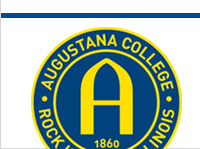Making a German-American Place: Davenport, Iowa, 1836-1918
Description, Abstract, or Artist's Statement
This study examines the impact of German-Americans in the creation of Davenport and Scott County, Iowa from 1836 through 1918. Like cities many other 19th century places in the American interior, Davenport and Scott County direly needed people to settle it, build its infrastructure, develop its economy, and contribute to growing social and political life. Conveniently, Davenport and Scott County boosters’ desires occurred simultaneously with rampant pauperism, political, ideological, and religious revolutions, economic redundancy, and widespread dreams of rebirth in Germany. These conditions produced an unprecedented migration from Germany to Davenport and Scott County in the second-half of the 19th century.
As Germans settled in Davenport and Scott County, they shaped their places to reflect aspects of their homelands, local geographic characteristics, national trends of industrialization and urbanization, and their evolving German-American identities. During the Germans’ first two decades, they largely lived and acted apart from their American counterparts. Though, with time, Germans-Americans progressively were incorporated into larger, more inclusive political, educational, economic, and social systems. They fought and earned their stars and stripes on Civil War battlefields, as well as in shoe factories, law offices, and classrooms. Due to their hard work and public spirit, Davenport and Scott County’s Germans quickly became revered for their heavy contributions on this evolving place.
Nevertheless, the story of German-American Davenport—and German-America, for that matter—concluded in tragedy. Amidst struggles for statewide prohibition, assimilative processes, and WWI-era anti-German hysteria, the German-American legacy was marred, erased, and ultimately all but forgotten. Hopefully my work can illuminate a rich and interesting history and challenge current discourses surrounding immigration and immigrant placemaking.
